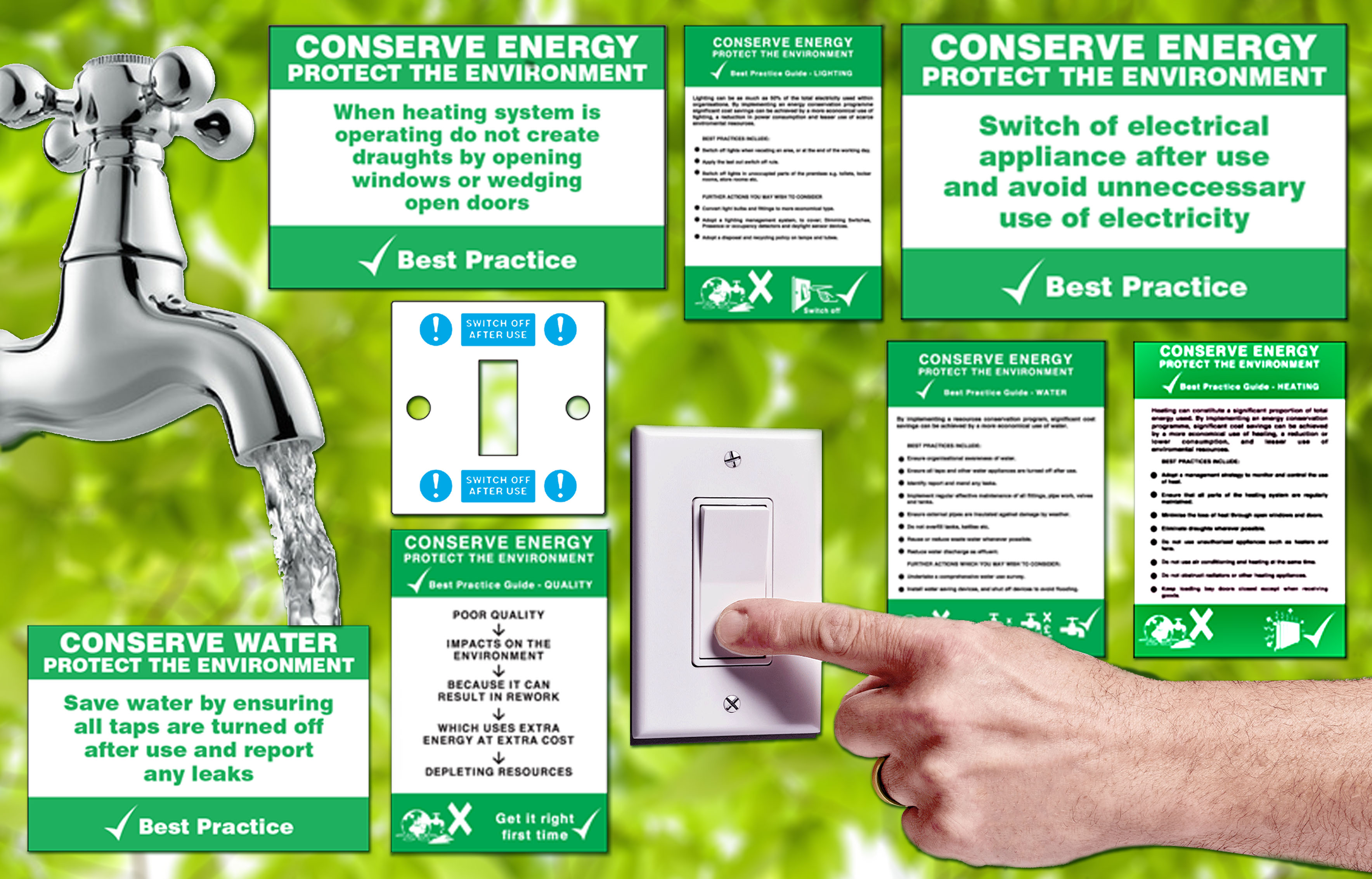
Conservation is usually reserved for discussions around the environment. However, typically, minimising waste has an additional benefit: saving money.
Most businesses want to help the environment and local waste level, but often, wrongfully, see it as a money sink. Conservation is a key path to creating more efficient, better systems in your workplace.
Explaining in financial terms makes creating a business case easier, especially if you’re struggling to update your company’s conservation standards.
Below, we’ll discuss how to conserve resources at work, how this benefits your business and the role signs and labels have in enforcing these practices.
How to Conserve Resources
Here’s how to reduce energy consumption in business processes:
Turn Off The Lights
This one is easy: turn off the lights when they’re not in use. This step applies to equipment, too – ensure your staff switch things off before they clock off for the day.
How much does this impact businesses? It’s just a couple of lights, right?
Well, an average home saves £15 a year from turning off the lights. Now, extrapolate that to all equipment in a business-wide setting, and this number can grow exponentially.
Turning off lights is the first step in figuring out how to save energy in the workplace as it’s so easy to implement.
Create Resource Plans
How many resources do you need to complete your essential tasks? Are any resources wasted? Are you going about your processes the right way?
These questions need answers, and the best method to do that is a resource plan. A resource plan is a list of the materials required to complete a task.
Going forward, ensure you know what you need for each process. By reviewing resource use annually, you can trim waste and energy in surprising places.
Replace Inefficient Machinery
Inefficient machinery is an issue for the environment and your bottom line. Poor machinery isn’t as efficient, costing you more in energy bills and burning more fossil fuels to power them.
So, what do we mean by inefficient machinery?
Of course, we’re not recommending you replace major machinery you can’t yet. If you run a steelworks with machinery that costs over £10 million, it’s not going to be a quick or easy job to replace.
However, small changes matter. For example, if your entire office is on desktop computers, then consider switching to laptops. They are more energy-efficient as they don’t require a constant stream of electricity to run, plus their smaller screens and design mean they use less energy overall.
At other times, replacing normal bulbs with energy-efficient options or upgrading smaller things like taps, toilets and kettles can save on water.
How to Minimise Waste in the Workplace
Reducing waste requires consistency, so here’s how to minimise waste in the workplace diligently.
Choose Paperless
According to the Global Paper Industry, 400 million tonnes of paper are used per year. In a world of electronic communications, this figure is simply too much.
Your business can likely benefit from going paperless, especially if you’re in the habit of printing out meeting minutes, agendas, etc.
Ask yourself: can electronic methods replace any paper-based processes?
Once you ask yourself that, draw up possible electronic replacements, and soon you’ll see the volume of paper waste fall.
Better, More Numerous Recycling Stations
If your staff don’t have accessible recycling stations, then they won’t recycle. It’s your responsibility as a business owner to supply these.
We’ve covered how recycling impacts waste management in the workplace in our blog: How to Improve Recycling in the Workplace with Label Source's Help
Essentially, if you supply recycling stations, then your business will receive savings. For example, if you recycle more, you will pay less landfill tax in the UK, which amounts to £96.70/tonne as of April 2021.
If you produce a lot of waste, that can easily add up to thousands a year.
Resource Conservation Signs And Why They Work
As with safety, employees sometimes need reminders. Even the best processes can come undone due to forgetfulness, especially in the hustle-and-bustle of a workplace.
That’s why you need to use resource conservation signs and notices, which implicitly help staff to follow conservation processes.
Remind staff, keep them vigilant and reap the rewards of a more efficient, eco-friendly workplace.
For all other safety news, follow our Twitter.